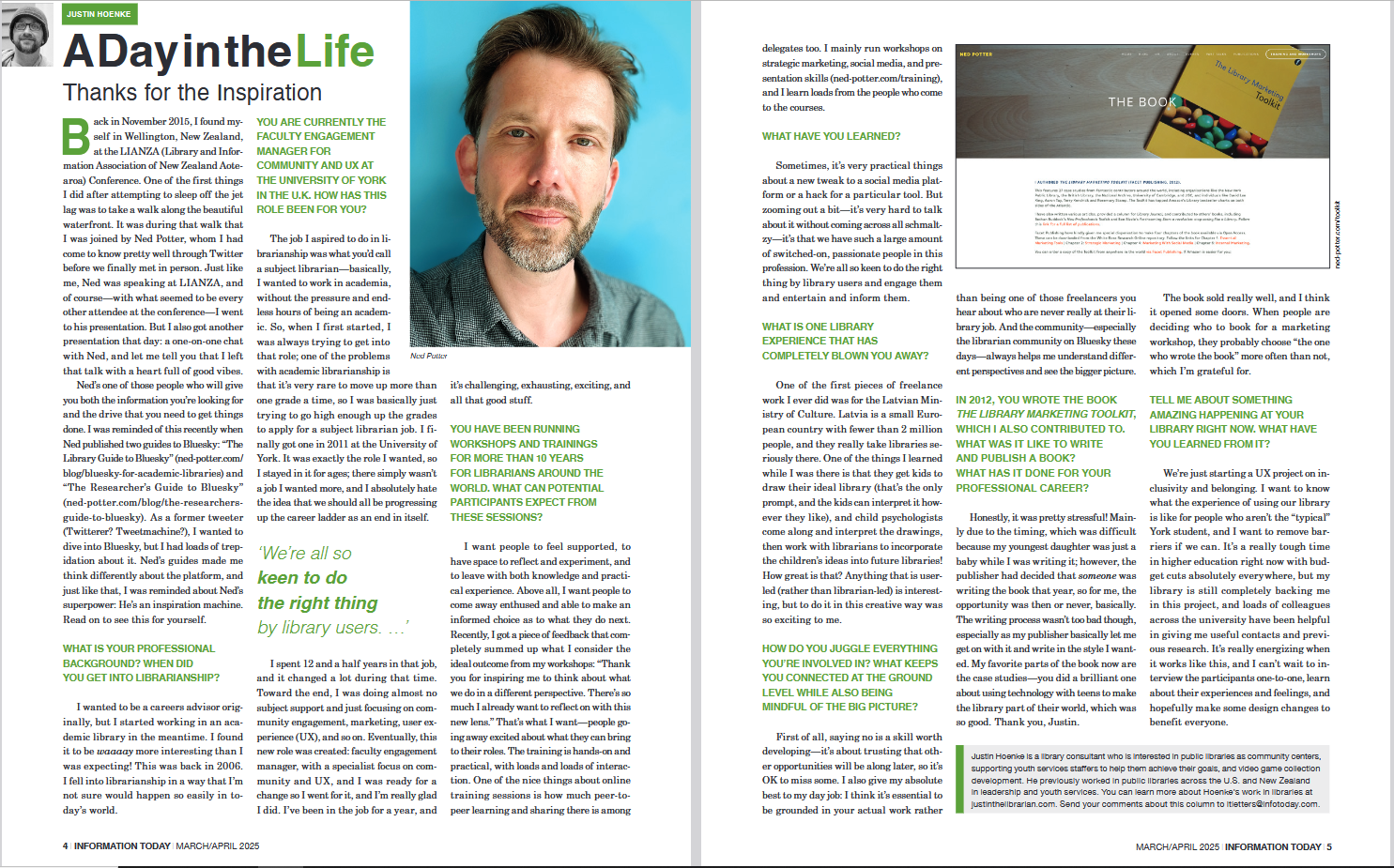Earlier this year I spoke about the social media landscape for public libraries in particular, at the Edge Conference in Edinburgh. It was a great room full of interesting and passionate people, and one of those slightly intimidating setups where you’ve got no laptop in front of you, just a TED-talk style presenter screen facing you from the floor below the stage…
The talk was filmed by prettybright.co.uk (more on which below) and they kindly gave me the footage, to which I’ve added a real-time screen-record of me doing my slides.
There are two reasons I want to share this here. Firstly it gives a pretty up to date state of play on library social media (and although it is public library focused a lot of it applies to other sectors too) and encapsulates a lot of key tips and approaches I feel really passionately about. I really enjoyed the take-aways from my talk (and others) in Dr Mary-Ellen Lynn's review of the event here.
Secondly it will give people an idea of what you get if you book me for a talk, and this particular presentation is a sort of microcosm of the social media workshops I run, minus the activities. When I speak at a conference I’m actively trying to flatten the hierarchy between speaker and audience - I want it to be as much a conversation as possible. I want to focus on ideas that can lead to actions. I want people to feel included, and reassured, as well as inspired to do things differently afterwards. Anyway: if you want to me to talk at your event or run some training, get in touch!
Shownotes:
1) Prettybright really helped me out here. They’d already uploaded a version of the talk to Vimeo but it had minor formatting issues with the slides and I wanted to be able to chop the talk up into shorter chunks (e.g. for sharing a section on LinkedIn) so I asked for the original footage, without realising how much work this would entail at their end. They had to shrink down and colour-grade the original broadcast quality footage from a giant 113 gig file and I’m really grateful to Howard Elwyn-Jones and his colleague Louisa for going above and beyond to do this for me.
2) In the section about Insta I mention ‘the Paisley presentation’ as being filled with the kinds of images that would work really well on that platform: that was in reference to Stephen Slevin’s talk which you can see here
3) At the end I mention handing over to my also Yorkshire-based colleagues: those were Jen Boyle and Rachel Ingle-Teare whose brilliant talk you can view here, about Leeds Libraries
4) The other talks from Edge are all on prettybright’s Vimeo too
5) I delivered a talk in Dublin about social media from the academic library point of view - this was also filmed (albeit just via Teams for the hybrid event, rather than on high quality gear): view Rebuilding the library community here
6) While I was at Edge I also judged a library innovation competition, which I found completely inspiring - I wrote about the winning and highly-commended entries here

